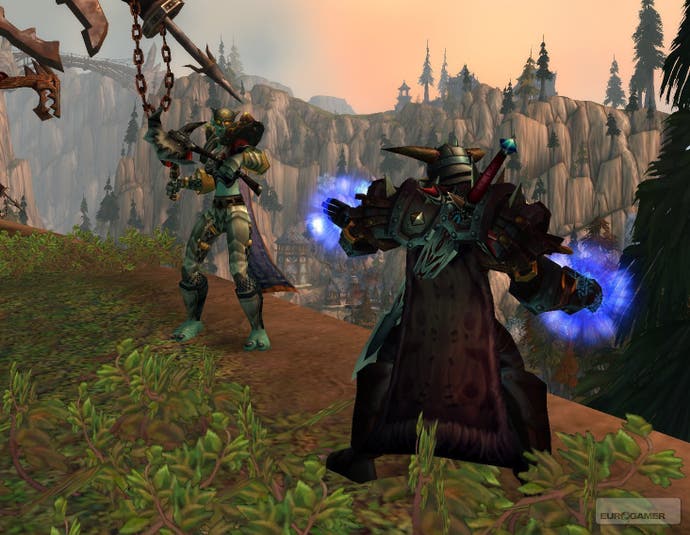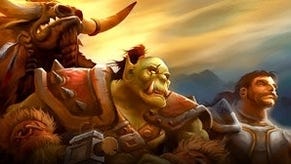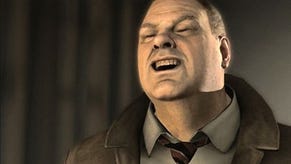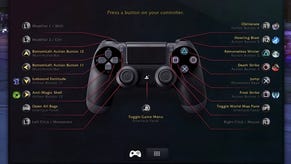World of Warcraft: Wrath of the Lich King
A class act: playing the Death Knight, and the big changes.
There are some sensational new abilities coming for most of World of Warcraft's character classes in second expansion Wrath of the Lich King: of course there are. As much as every player of Blizzard's massively multiplayer monster can't wait to tear across Northrend, delve into its dungeons and batter its new battleground - all of which we discussed in detail in last month's preview and interview - there is a part of you that cares about nothing more than new toys to trash with.
The level 70-80 skills themselves are still largely under wraps, but we did get to explore the new talent trees at Blizzard's Worldwide Invitational event in Paris this past weekend, and some of them made our eyes pop: Fury Warriors dual-wielding two-handed weapons and a breathtaking demon form for Demonologist Warlocks in particular. Deeper changes were discussed at a developer panel, including a complete revision of the Hunter pet system that gives pets their own talent trees. More on these later. But there was one skill that, for us, eclipsed even these, and it doesn't come at level 80, or the top of a maxed-out talent tree. It comes at level 55, for a freshly-minted Death Knight, Lich King's unholy new hero class: the Death Grip.
In the grip of death
Death Grip warps space to instantly teleport an enemy to the Death Knight's position, from up to thirty yards away. It then forces the enemy to attack the Death Knight for three seconds. In the parlance, it's a ranged pulling and aggro spell, extremely useful for tanking (soaking up damage and protecting your allies).

But that's a dry and utilitarian description that doesn't remotely cover the outrageous, hilarious sense of power you get from simply plucking hapless monsters out of the ether and dumping them under your sword. It's the Death Knight all over: no cast times, no tricksy positioning, just instant gratification, tanking without pain, slaughter without pause.
Designed to address the shortage of tanks in the game - due to the necessity for classes like the Warrior and Paladin to decide between doing decent amounts of damage, and taking it - the Death Knight is designed to do a balance of both and, simply, make this crucial and demanding group role more fun. Based on our very limited hands-on with the class at WWI - we could take level 55 Death Knights for a run around the Eastern Plaguelands with their handful of starting skills, and no talent points to spend - it should do that with ease. Death Grip alone seems to guarantee it.
Ultimately, Death Knights will have their own adventuring zone to start in, and a home town called Ebon Hold they can teleport to at any time, though these weren't in the build of Lich King at WWI. They also start ready-equipped with a mount - an 'epic' one at that, a Death Charger (zombie horse) with the full 100 percent speed boost and the riding skill to go with it, easing cash drain considerably when you start. Any race can be a Death Knight; Tauren, Orcs and male Draenei have an imposing mass in their heavy black plate armour, although nothing beats the extraordinarily ridiculous sight of a Death Knight gnome, which looks something like a super-deformed, medievally-themed LEGO Darth Vader.

Although it's closest to the Warrior and Paladin in role and equipment, being heavily armoured, the Death Knight plays something like a Rogue. Most of its magical effects are linked to melee attacks, most of its abilities are instant cast, and it has an elaborated version of the Rogue's complex and rhythmic twin resource mechanic - regular abilities are cast out of a small, fast-recharging pool (in the Death Knight's case, runes) with more powerful finishing moves available by building up and unleashing a secondary reserve (in the Death Knight's case, runic power).
In the long run you will be able to alter your line-up of six runes - effectively customising the availability and frequency of your abilities - but in the build we played we were stuck with two each from the blood, unholy and frost schools. They recharge fast - Death Knight play will ultimately not be about how much power you have, but which powers, and when.









